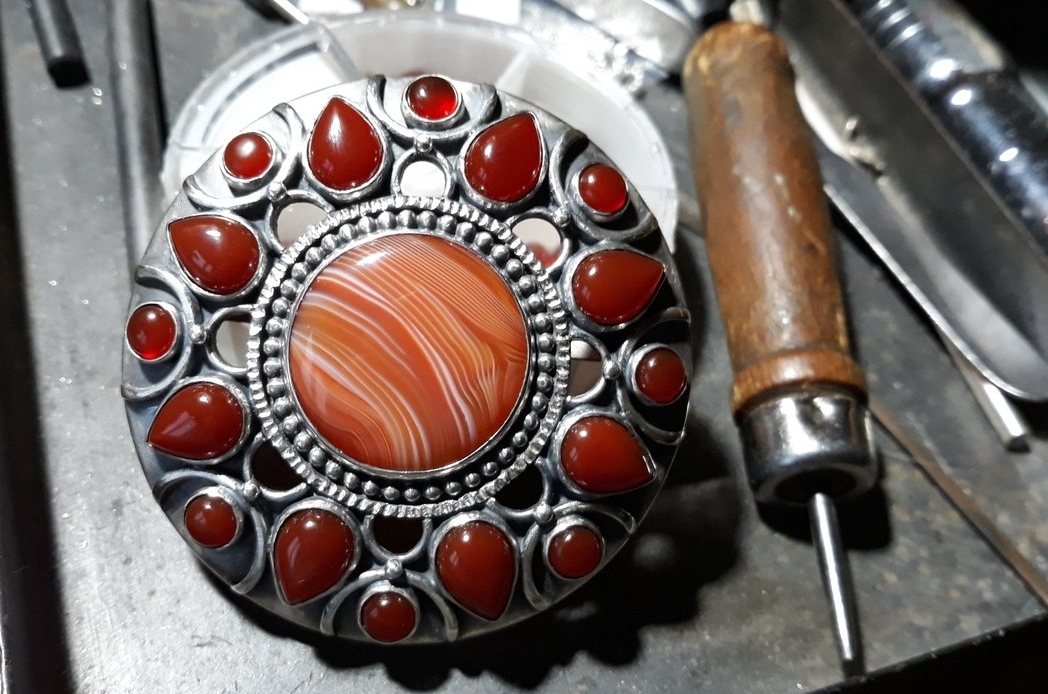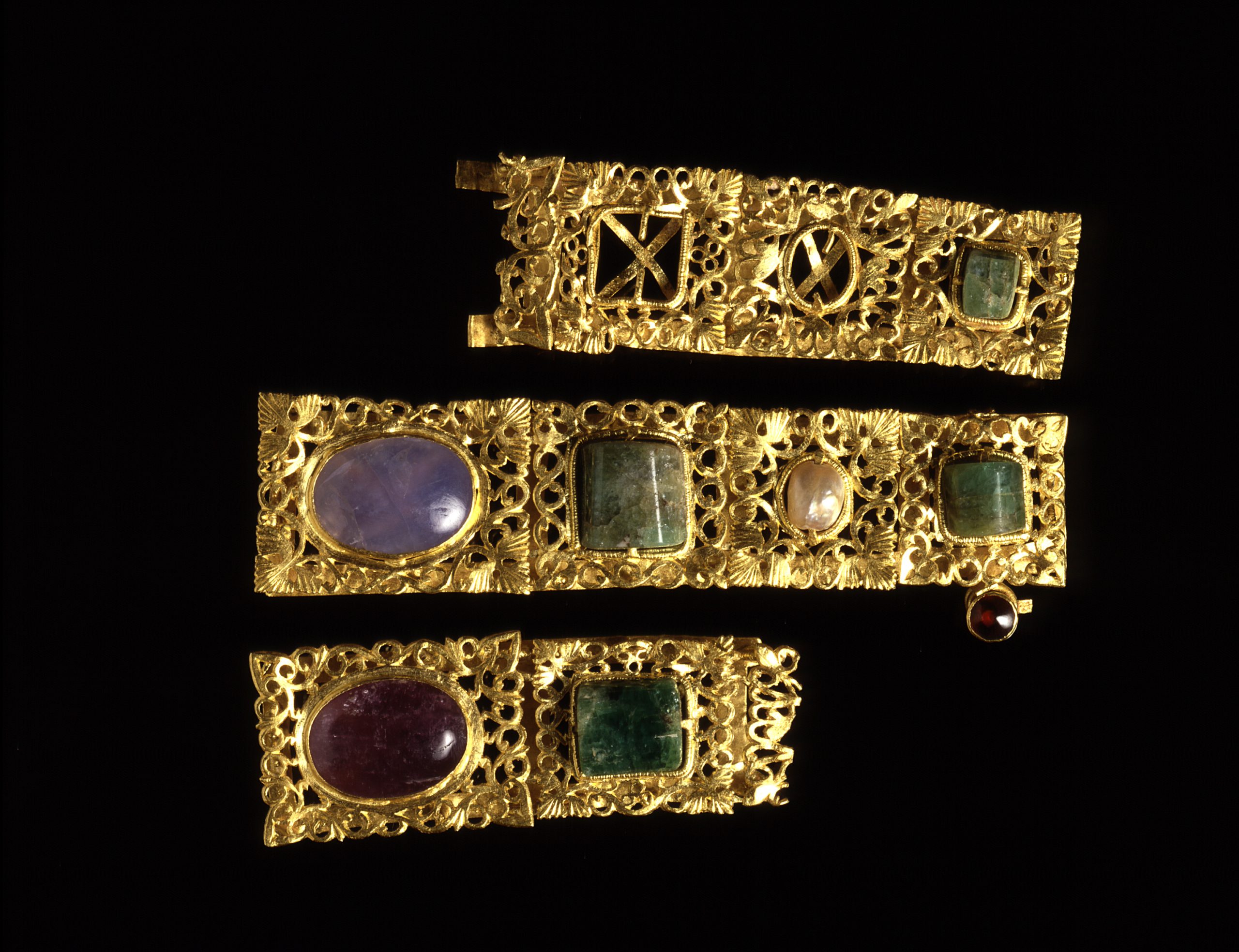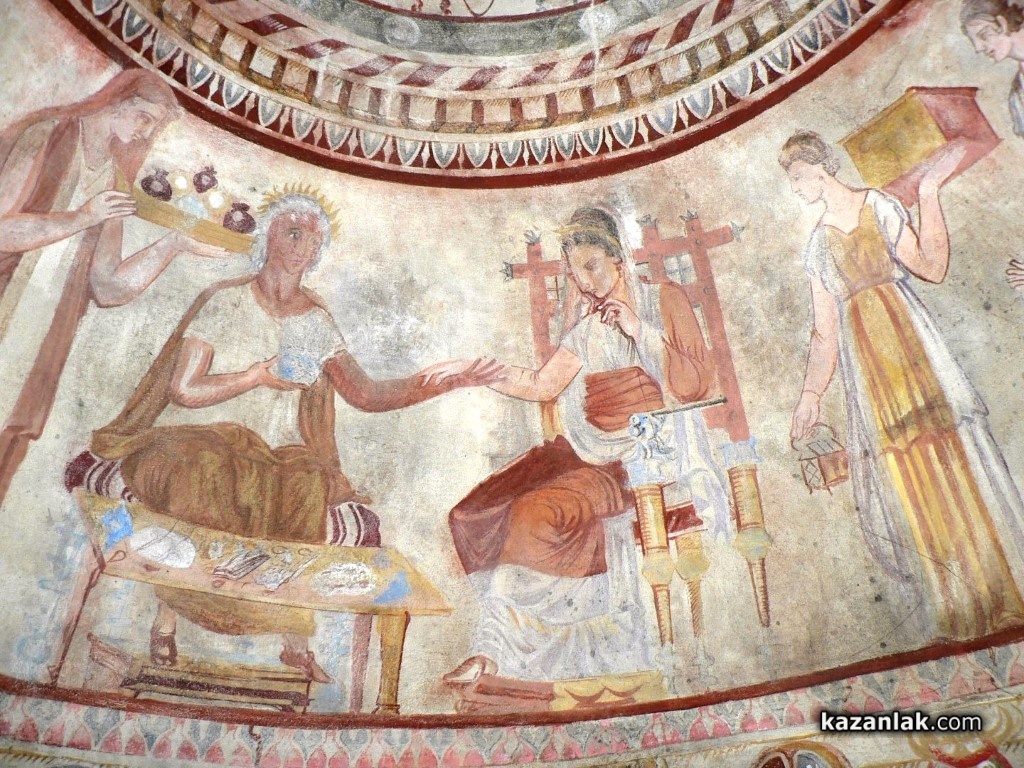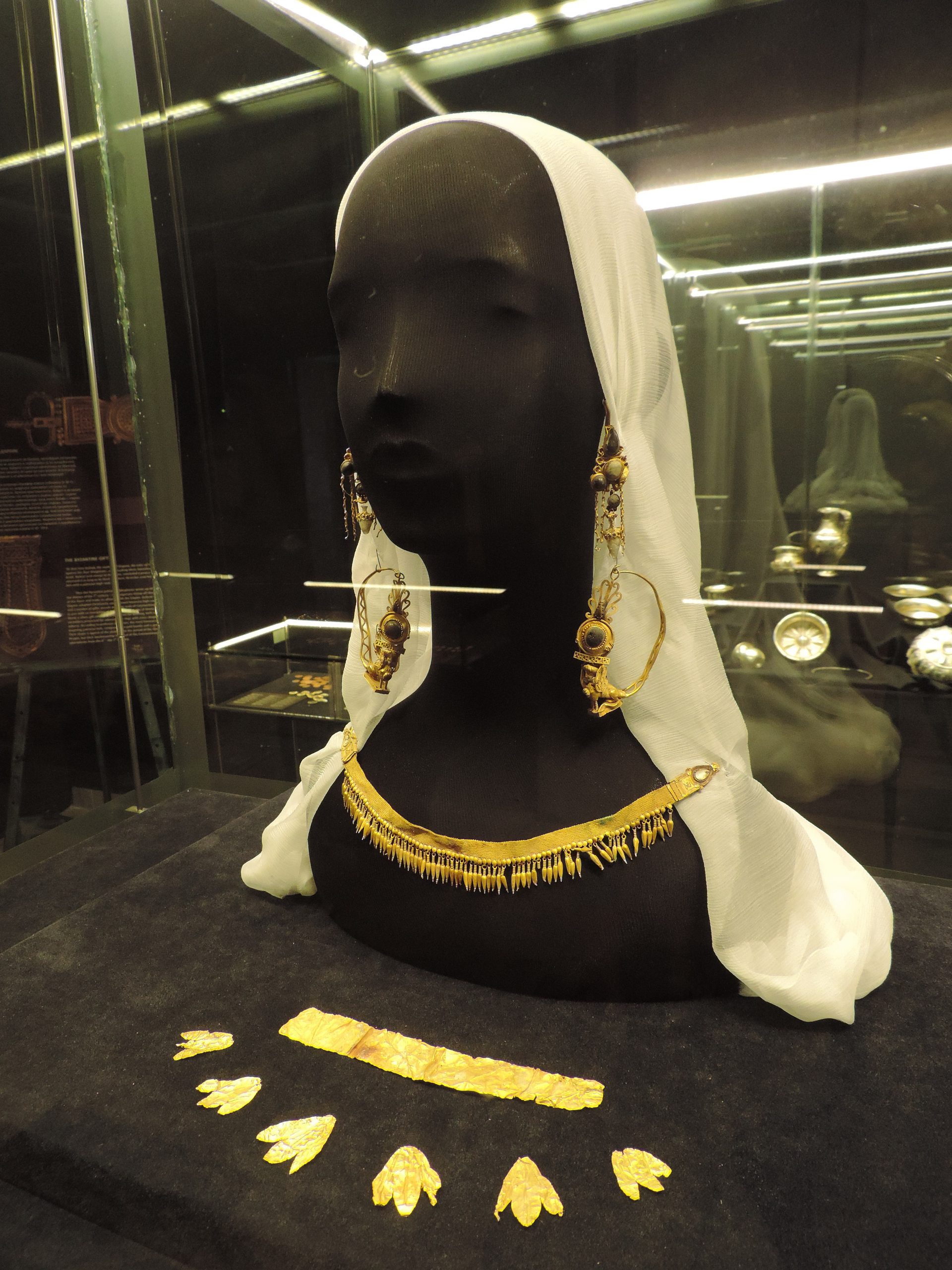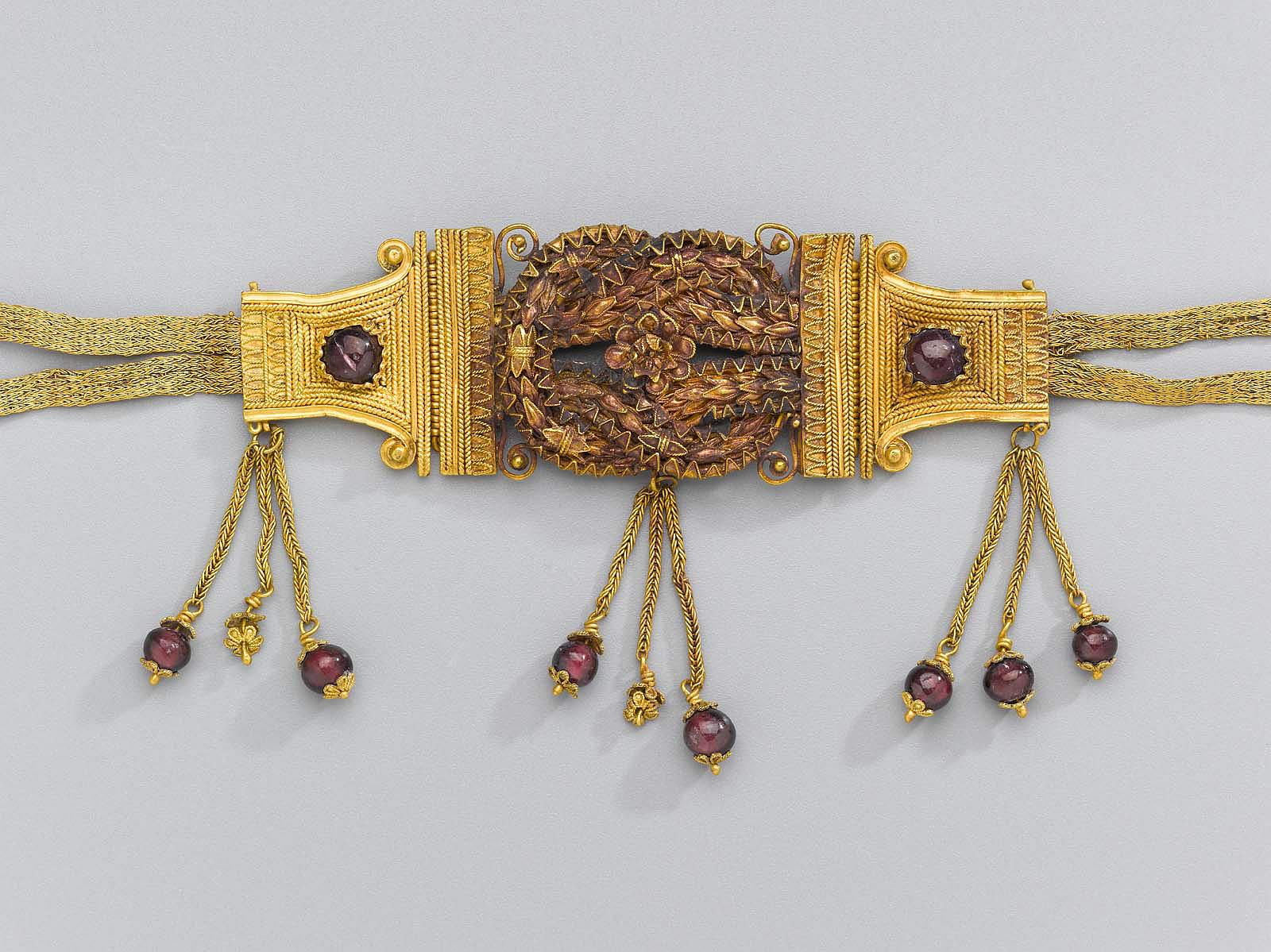Burial near Sinemorets, Tsarevo district, middle of the 3rd century BCE.
National Historical Museum, Sofia Inv. No. 51279
In 2006, a unique gold Thracian treasure was found in a mound above the mouth of the Veleka River. Among the discoveries are: a gold plate – a diadem central ornament with an inscription, gold necklaces, an earring or a temple pendant with goddess Nike, silver disks that were part of ritual clothing most likely. In total, about 160 gold objects were excavated from the burial. It is thought that a noble person, probably a priestess of aristocratic status, was cremated in the mound and therefore some of the objects were burned. Ceramic tiles with the image of the mother goddess, worshiped by the Thracians, were also discovered.
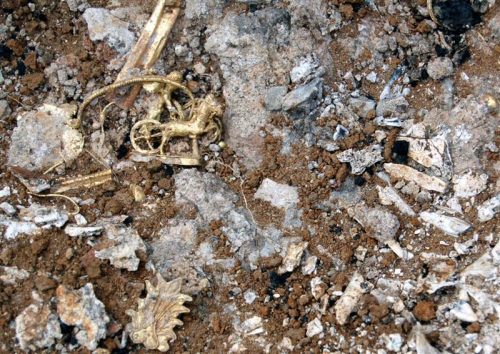
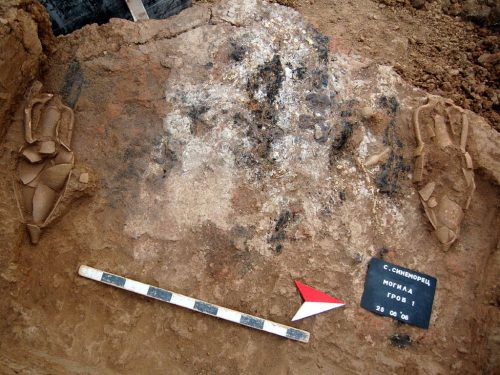

After. M. Tonkova
DIADEM



The central part of the gold plate is an oval-shaped pictorial field, decorated with two scanned threads intertwined with a Heracles knot. In the center of this field there is a nest in which an ellipsoidal stone is inserted. Two lines of text are engraved on both short sides of the plate: “Master Demetrios made for Kortodzuntos.” Two cylinders are soldered on the reverse side of the plate. The palmettes and rosettes in this necklace have similar cylinders for stringing. In the center of the largest rosette, just as on the plate, there is a nest into which a pomegranate is inserted. The use of palmettes and rosettes for decoration made it possible to combine elements with similar ornaments found in the burial into one piece of jewelry.
From the same burial
Necklace with a pendant in a shape of a bull head


The necklace is made up of large and small beads and cylindrical tubes. In the center of the necklace there is a bull’s head, made from a solid gold plate with the help of a punch with punching the background with the help of a matrix. The eyes and fur in the frontal part are worked out additionally. The second plate is fastened to the first from the back side. Ears and horns are attached separately. The horns are made of a thin plate and are hollow tubes. Above the horns, a separately made plate is attached, which is a ten-leafed palmette. The leaves are additionally decorated with a thin-scanned thread (smooth wire with notches). In the recesses, traces of enamel can be discerned. A drop-shaped nest is placed in the center of the palmette, framed by a toothed plate, into which a drop-shaped stone (carnelian or garnet) is inserted. Above and below the nest, circles-nests, decorated with filigree thread, are clearly distinguishable. In one of them, traces of dark enamel are visible. Imitation of wool is made with thin notches.

Photo source https://www.tsarevo.info

Photo © Vladimir d’Ar

LITERATURE
- D. Zhuravlev, K. Firsov (Eds.). Thracian Gold from Bulgaria. The Legends become alive; pp. 286-287
https://www.academia.edu - The jewellery of a wealthy Thracian woman from Anchialos and the fashion in Middle and Late Hellenistic jewellery by Milena Dimitrova Tonkova
